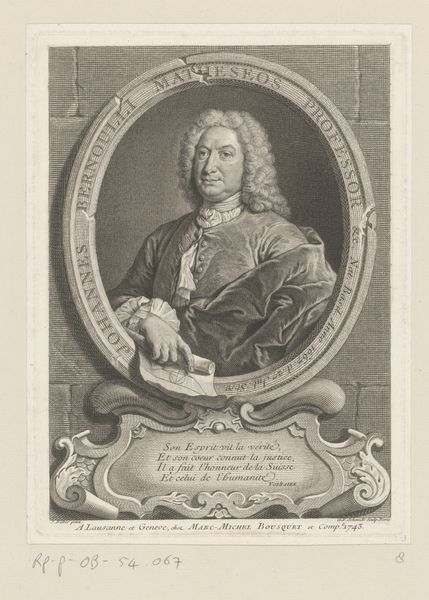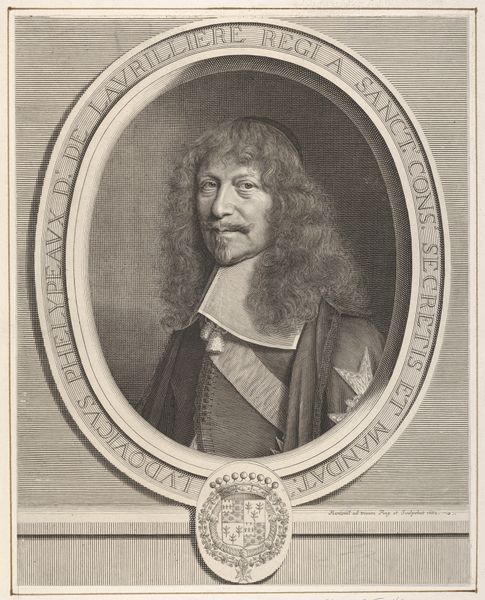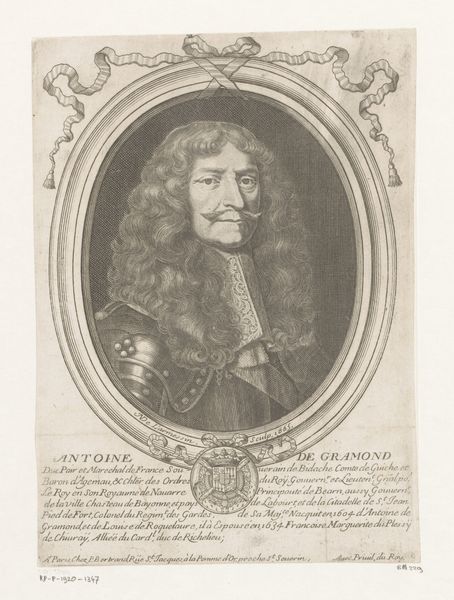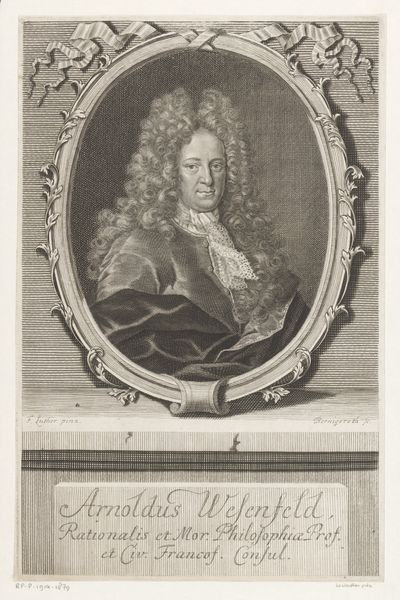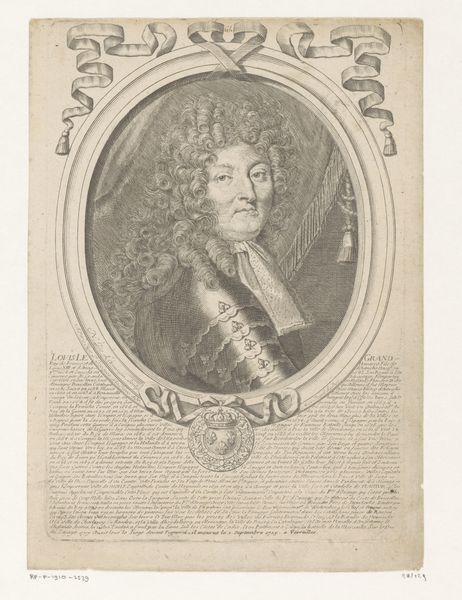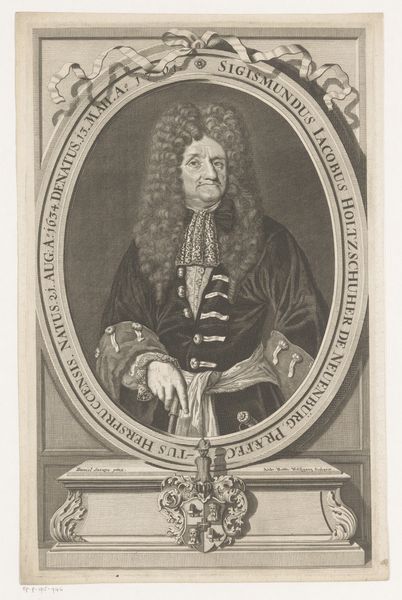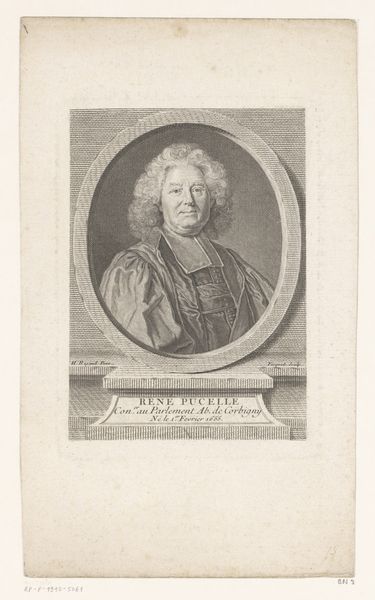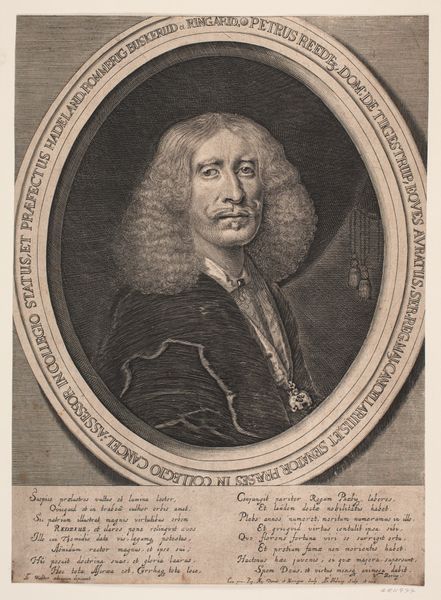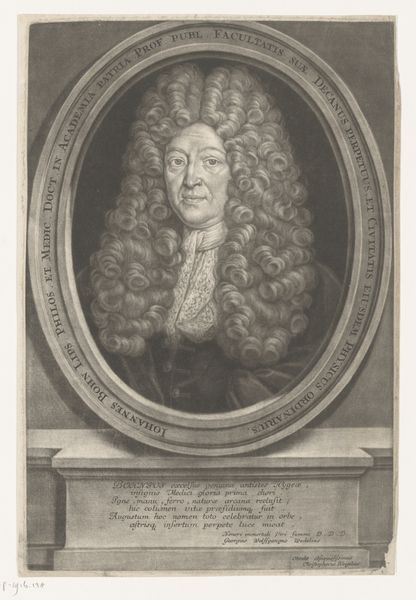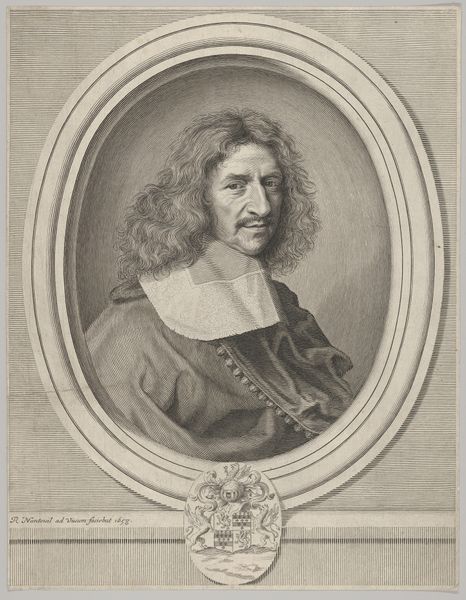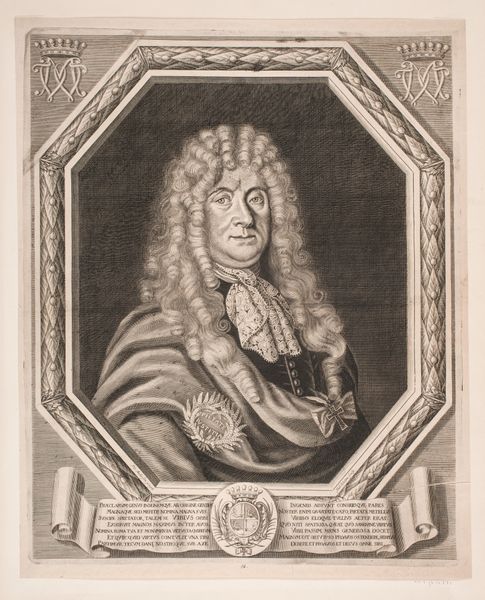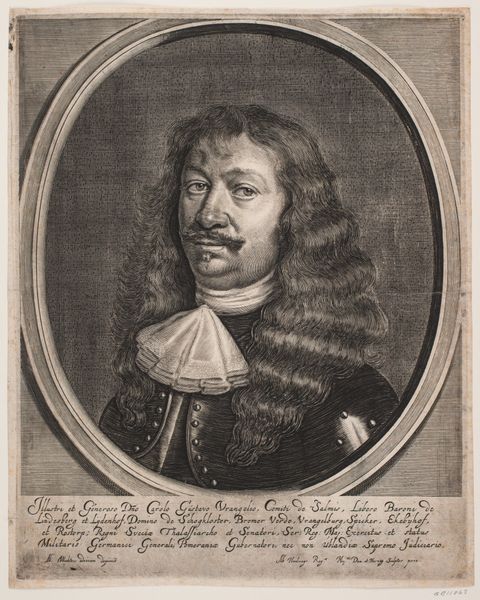
print, engraving
#
portrait
#
baroque
# print
#
portrait reference
#
portrait drawing
#
history-painting
#
engraving
Dimensions: 540 mm (height) x 413 mm (width) (bladmaal)
Curator: Here we have a portrait of Hans Schack, an engraving by Hubert Schaten dating from 1673. Editor: My first impression is one of power—the wig is almost a halo, and the armor lends a solidity, a presence to the man. But there’s also a delicacy to the details; you see the lace and fine lines rendered meticulously through the printmaking process. Curator: Precisely. Consider the symbolic weight carried by these details. Schack was a Count, a powerful figure in his time. The armor and extravagant wig are signifiers of status, power, and martial prowess, typical of Baroque portraiture meant to immortalize and project authority. But, looking closely, we find the frailty and imperfections that subtly complicate the image of masculine authority. Editor: Yes, looking closely reveals so much about the work and the materials used. It’s a print, of course, which makes me think about multiples. How widely was this image disseminated? And for what purpose? To project power, as you said, but also to solidify his image in the public consciousness. It would be very interesting to look at who produced and purchased the piece. Were the means to generate similar images becoming more widely accessible at this time? Curator: Undoubtedly, prints enabled wider access to portraiture and information. Think of the tradition of the "Great Man," the notion that portraying influential figures impresses their ideals on the viewers, reminding them of the social order. His gaze directed slightly off to the side also adds intrigue, doesn’t it? Inviting you to see not just who he *was*, but his position, and perhaps to join the vision towards which he looks. Editor: All made possible by the reproducible nature of printmaking itself, really a technology democratizing image distribution! Thinking more about its production – what would be the labour conditions like for Schaten? Would they be creating singular art commissions, or more standardized artworks to market needs? The material supports ideological messaging – both are significant here! Curator: Absolutely, the material process enables that wider dissemination of symbolism. It truly complicates any singular message or ideal, which speaks volumes about its ongoing legacy and potency today. Editor: An insightful tension between material production and the intended effect—an excellent case to close on.
Comments
No comments
Be the first to comment and join the conversation on the ultimate creative platform.
